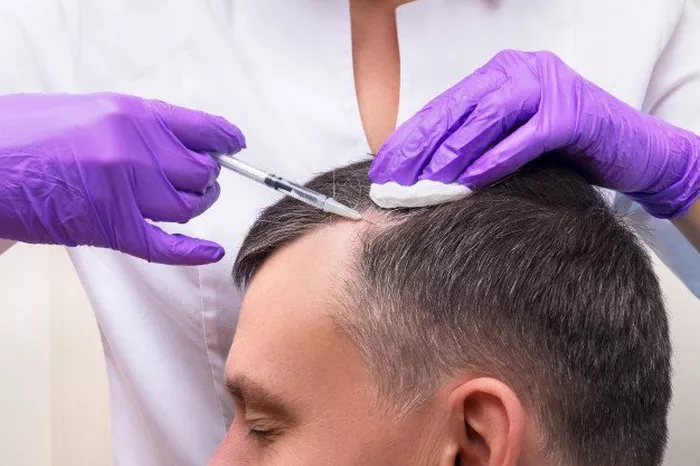Hair transplants are increasingly popular for those seeking to combat hair loss. However, a common concern among potential candidates is whether they need to shave their heads before undergoing the procedure. This article will explore the hair transplant process, the role of shaving, and the various factors that influence this decision.
Understanding Hair Transplantation
What is a Hair Transplant?
A hair transplant is a surgical procedure that involves moving hair follicles from one part of the body, typically the back or sides of the scalp, to areas experiencing thinning or baldness. The most common techniques used in hair transplantation are:
Follicular Unit Transplantation (FUT): Involves removing a strip of skin with hair follicles and then dissecting it into smaller grafts.
Follicular Unit Extraction (FUE): Involves extracting individual hair follicles directly from the donor area without removing any skin.
Why Consider a Hair Transplant?
Hair loss can significantly affect self-esteem and confidence. A hair transplant can provide a natural-looking solution for individuals with conditions such as:
Androgenetic alopecia (male or female pattern baldness)
Hair loss due to scarring
The Shaving Debate
Do You Have to Shave Your Head?
The short answer is not necessarily. Whether you need to shave your head for a hair transplant depends on various factors:
Type of Procedure:
FUE: This method typically requires shaving the donor area to allow for easier extraction of hair follicles. However, some clinics offer “no-shave” FUE techniques, where only a small portion of the donor area is shaved, leaving the surrounding hair intact.
FUT: This method usually does not require shaving the entire head. Only the strip of skin removed will be shaved, while the rest of the hair can remain as is.
Extent of Hair Loss:
If you have a significant amount of hair, you may not need to shave your head completely. In such cases, doctors can work around the existing hair to extract follicles.
Surgeon’s Preference:
Different surgeons and clinics have varying protocols. Some may prefer to shave the entire head for easier access, while others may accommodate your preference for minimal shaving.
See Also: Can a Hair Transplant Fix Your Hairline?
Benefits of Shaving
While not mandatory, shaving has some advantages:
Easier Access: Shaving allows for better visibility and access to the scalp, making the extraction process smoother.
Reduced Risk of Damage: With shorter hair, there’s less chance of damaging existing hair during the extraction process.
Cleanliness: A shaved head can be easier to clean and prepare for the procedure.
Concerns About Shaving
Many individuals have concerns about shaving their heads, including:
Aesthetic Issues: Some may feel self-conscious about having a shaved head before the procedure, especially if they have not previously experienced baldness.
Regrowth Time: The time it takes for hair to grow back after shaving can be a concern, especially for those who prefer longer hairstyles.
Alternatives to Full Shaving
If you’re apprehensive about shaving your head, consider these alternatives:
Partial Shaving: Many clinics offer the option of shaving only the donor area or a small section of the scalp. This can help maintain a more natural appearance before and after the procedure.
Long Hair FUE: This technique allows for the extraction of follicles without shaving the entire head. Only a small section is shaved, often hidden by longer hair.
Consultation with Your Surgeon: Speak with your hair transplant surgeon about your preferences and concerns. They can provide personalized recommendations based on your hair type and the technique they will use.
Preparing for a Hair Transplant
What to Expect Before the Procedure
Consultation: Schedule a consultation with a qualified hair transplant specialist to discuss your hair loss, medical history, and expectations.
Preoperative Instructions: Your surgeon will provide specific guidelines to follow in the days leading up to the procedure, which may include avoiding blood-thinning medications and alcohol.
Hair Care: If shaving is necessary, your surgeon will advise you on how to care for your hair and scalp leading up to the procedure.
Day of the Procedure
On the day of the hair transplant, you will:
Arrive at the Clinic: Expect to spend several hours at the clinic, depending on the extent of the procedure.
Receive Anesthesia: Local anesthesia is typically administered to ensure comfort during the extraction and implantation process.
Have the Procedure Done: The surgeon will either perform FUE or FUT based on your agreed-upon plan.
Post-Procedure Care
Recovery Tips
After the procedure, follow these guidelines to ensure proper healing and optimal results:
Avoid Touching the Scalp: Refrain from touching or scratching the transplanted area to prevent dislodging grafts.
Follow Hair Care Instructions: Your surgeon will provide specific post-operative care instructions, including when to wash your hair and any medications to take.
Avoid Strenuous Activities: For a few weeks, avoid heavy exercise or activities that could lead to sweating, as this may irritate the scalp.
Attend Follow-Up Appointments: Regular follow-ups with your surgeon are essential to monitor progress and address any concerns.
Conclusion
In summary, whether you need to shave your head for a hair transplant largely depends on the procedure type, the extent of hair loss, and the surgeon’s preferences. While shaving may offer advantages such as easier access and cleanliness, many alternatives allow for a more personalized experience. If you’re considering a hair transplant, consult with a qualified specialist to discuss your options and find a solution that suits your needs. With the right approach, you can achieve natural-looking results and regain your confidence without the necessity of a completely shaved head.
You Might Be Interested In
- When to Remove Scabs After a Hair Transplant: A Complete Guide
- How Are Hair Implants Done? Hair Restoration Techniques
- Where Does the Hair for a Hair Transplant Come From?


